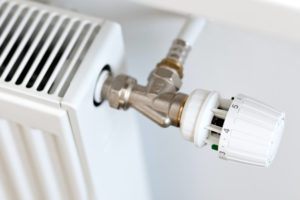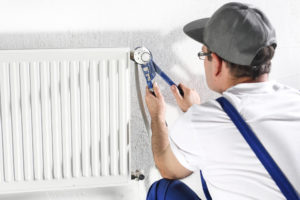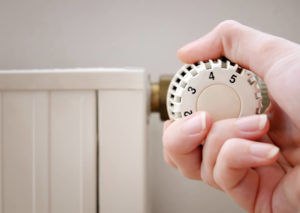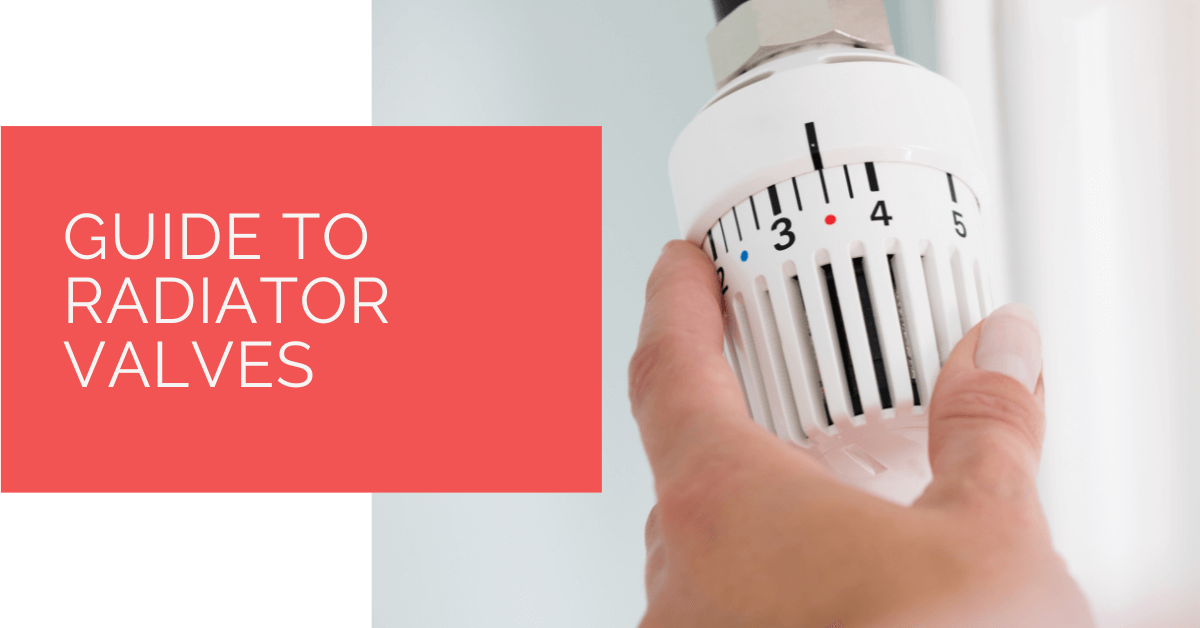If you’re like most people, you probably don’t think about radiator valves very often. But if you plan on repairing or replacing your radiators, it’s important to know what valves are available and what each one does. In this article, we will provide a comprehensive guide to radiator valves! We’ll discuss the different types of valves and their functions, and how to choose the right valve for your needs.
Contents
- 1 Key Takeaways
- 2 What Are Radiator Valves and What Do They Do?
- 3 The Different Types of Radiator Valves
- 4 How to Choose the Right Radiator Valve
- 5 Choosing a Colour or Finish for Your Valves
- 6 How to Replace and Install a Radiator Valve
- 7 Common Problems with Radiator Valves and How to Solve Them
- 8 Tips for Maintaining Your Radiators and Valves
- 9 FAQ
- 10 Heat Pump Source: Reliable Heating and Cooling Solutions
- 11 Conclusion
Key Takeaways
- Radiator valves control water flow through radiators and come in various types, including manual, automatic, angled, corner, and thermostatic valves.
- Choosing the right radiator valve involves deciding between manual and automatic, considering the valve size, and selecting the material that best suits your needs.
- To maintain radiators and valves, regularly bleed to remove air, inspect for leaks, and consult a professional if you encounter issues.
What Are Radiator Valves and What Do They Do?
Radiator valves are used to control the flow of water through your radiator. There are two main types of radiator valves: manual and automatic. Manual valves are often used in older homes, while automatic valves are more common in new construction. Both types of valves serve the same purpose, but they operate differently.
The Different Types of Radiator Valves
Angled Valves
Angled radiator valves are the most common type of valve. They are typically made from brass or bronze and have a lever that is used to control the flow of water. Angled valves are easy to install and use, which makes them a good choice for most homeowners.
Corner Valves
Corner radiator valves are similar to angled valves, but they are designed for use in radiators that are installed in the corner of a room. Like angled valves, corner valves are typically made from brass or bronze and have a lever that is used to control the flow of water.
Dual Fuel Valves
A dual fuel valve is connected o a dual fuel radiator which is a radiator connected to both your central heating system and your electric mains. This means that your radiator can be heated either by the central heating system, or electrically via the heating element.

H-Block Valves
H-Block radiator valves are H-shaped valves with a twin connection to join the pipes and valve inlets on middle connection radiators.
Lockshield Valves
A Lockshield valve is a radiator valve that aids in the overall balancing of the system by allowing pressure to enter as needed. It may be opened to various degrees to allow a specific amount of pressure into the system – depending on where the radiator is located in the home.
Manual Valves
Manual radiator valves are the most common type of valve. They are typically made from brass or bronze and have a lever that is used to control the flow of water. Manual valves are easy to install and use, which makes them a good choice for most homeowners.
Modern Valves
Modern radiator valves are designed to be more aesthetically pleasing than older models. They are available in a variety of finishes, including chrome, brushed steel, and even color-coordinated to match your radiator. Modern valves are also typically easier to use, with lever controls that are easy to operate.
Straight Valves
Straight radiator valves are less common than angled or corner valves. They are designed for use in radiators that are installed against a straight wall. Straight valves are typically made from brass or bronze and have a knob that is used to control the flow of water.
Thermostatic Radiator Valves
Thermostatic radiator valves (TRV) are the most advanced type of valve. They are designed to automatically regulate the flow of water through your radiator, based on the temperature in the room. Thermostatic valves are more expensive than other types of valves, but they can save you money on your energy bills.
Traditional Valves
Traditional radiator valves are the most common type of valve. They are typically made from brass or bronze and have a knob that is used to control the flow of water. Traditional valves are easy to install and use, which makes them a good choice for most homeowners.
How to Choose the Right Radiator Valve
There are a few things to consider when choosing the right radiator valve for your needs. First, you need to decide whether you want a manual or automatic valve. If you’re not sure which type of valve is best for your home, we recommend talking to a professional.
Next, you need to think about the size of the valve. Radiator valves come in a variety of sizes, so it’s important to choose one that will fit your radiator. Finally, you need to decide what material you want the valve to be made from. Radiator valves are typically made from brass, bronze, or plastic.
If you’re not sure which type of radiator valve is right for you, we recommend talking to a professional. They will be able to help you choose the right valve for your needs and install it properly.
Choosing a Colour or Finish for Your Valves
Radiator valves come in a variety of colours and finishes, so you can choose the one that best fits your style. If you have a modern home, you might want to choose chrome or brushed steel finish. If you have a traditional home, you might want to choose a brass or bronze finish. You can also find radiator valves in a variety of colours, so you can match them to your radiator.

How to Replace and Install a Radiator Valve
Replacing and installing a radiator valve is a fairly easy process. Here are the steps you need to follow:
- Turn off the water supply to your radiator.
- Disconnect the pipes from the old valve and remove it from the radiator: Remove the radiator valve by undoing both nuts in a clockwise direction. The top nut should be loosened first, after which the bottom nut should be undone to allow you to remove the valve completely. You may need to use the wrench at this stage to keep the valve body steady.
- Fit the new radiator valve: Hand-tighten the new radiator valve into place before using tools to fix the radiator value into place. Use PTFE tape if you want to minimise risks of leaks.
- Turn on the water supply to your radiator.
Common Problems with Radiator Valves and How to Solve Them
If you’re having problems with your radiator valves, there are a few things you can do to fix them. First, check the manual to make sure you’re using the valve correctly. If that doesn’t help, try bleeding your radiators. This will help remove any air from the system and should solve most problems. If bleeding your radiators doesn’t help, you may need to replace the valve.
Tips for Maintaining Your Radiators and Valves
Here are a few tips to help you keep your radiators and valves in good condition:
- Check the manual for your radiator before using it. This will help you understand how the radiator works and how to use it properly.
- Bleed your radiators regularly. This will help remove any air from the system and prevent problems.
- Inspect your radiators and valves for leaks. If you find a leak, you’ll need to repair it immediately.
If you’re having problems with your radiator or valves, talk to a professional. They will be able to help you diagnose the problem and find a solution.

FAQ
What Size of Radiator Valve Do I Need?
The size of the valve is determined by the pipes and connections, not the overall valve size. With this in mind, radiator valves are generally made to fit pipes that are between 15mm and 28mm in diameter. However, it’s not unusual to come across pipes with diameters ranging from 8mm to 28mm. If your pipework is larger or smaller than the normal 15mm, and you can’t locate the valves in that size, we recommend getting adaptors.
What Style of Radiator Valves Are Available?
There are a few different styles of radiator valves available. The most common are the thermostatic radiator valve (TRV), manual radiator valve, and the Lockshield valve.
How Often Should I Replace My Radiator Valve?
Radiator valves should last for many years. However, they can become worn over time and may need to be replaced. If you’re having problems with your radiator valves, we recommend talking to a professional. They will be able to help you diagnose the problem and find a solution.
What Do the Numbers on A Radiator Valve Mean?
Radiator valves usually have numbers or markers to show how much heat the radiator is producing. These numerical ranges generally vary from one to six. You should achieve a room temperature of about 20°C by turning the valve to 3.
Do I Need a TRV?
A TRV is not a requirement, but it can be beneficial. TRVs help regulate the temperature in your room by automatically opening and closing the valve to allow more or less water to flow through the radiator. This helps to keep your room at a comfortable temperature and can save you money on your heating bill.
What Are the Different Radiator Valve Connections?
There are three main styles to choose from: straight, corner, and angled. These are the main choices for connecting your radiator to your pipe system.
Where Is My Radiator Valve Inlet?
In most cases, radiator intake valves are found on the sides of a radiator. The inlet is generally placed beneath the bottom of the radiator for heated towel rails.
Heat Pump Source: Reliable Heating and Cooling Solutions
At Heat Pump Source, we take pride in our unwavering commitment to serving the UK with top-tier HVAC solutions. From the efficiency of heat pumps and the cool relief of air conditioning to the warmth of boilers, radiators, and underfloor heating, our dedicated team is always at the forefront of innovation. We understand the unique needs of every household and business, and we strive to provide dependable health and cooling products and services that are tailored just for you. Ensuring your comfort and satisfaction is our utmost priority. Whether you have questions, need guidance, or require support, we’re always here to assist. Please don’t hesitate to contact us; we’re eager to be of service.
Conclusion
Radiator valves are an important part of any heating system. They help to regulate the flow of water through the radiator and can be used to control the temperature in your room. Radiator valves come in a variety of sizes and styles, so it’s important to choose one that will fit your needs. If you’re having problems with your radiator valves, we recommend talking to a professional. They will be able to help you diagnose the problem and find a solution.
About the Author
At Heat Pump Source, our articles are the product of a collaborative effort among a team of highly skilled HVAC experts. Our dedicated professionals, hailing from diverse backgrounds in heating, ventilation, air conditioning, and refrigeration, contribute their extensive knowledge and experience to every piece of content. This multidisciplinary approach ensures comprehensive coverage. Our commitment is to deliver authoritative, reliable, and tailored advice to meet the unique needs of every household and business across the UK.

